“Doctor Mathison.”
Doctor Mathison awoke with a small start, a medical student gently shaking his shoulder to wake him up.
“Doctor Mathison, we’re ready for you.”
He was sitting on the sterile cushioned bench in the waiting room outside the operating theater where the other students had been setting up for the next operation. Apparently they had taken their time, since he rarely had enough of it to afford the luxury of dozing off while on the clock. He looked up at the student who had awoken him. Like him, the student was wearing a surgical mask, gloves, and medical scrubs, so that all Mathison could make out was his eyes. He cleared his throat, standing up and smoothing his attire before giving the student a curt nod.
“Right then. Shall we?”
The student nodded. Dr. Mathison crossed the checkered linoleum floor and pushed open the two swinging double doors that led into the theater. The oculus on each door caught the fluorescent white surgical lights hanging over the large patient table as they swung open, sending circular spots of light dancing around the walls of the room. The students inside, twenty in total, snapped to attention, their hushed conversation dying in an instant.
There was a larger crowd today, even for a neurofusion procedure, and the doctor wanted to be as efficient as possible.
“Let’s begin.”
The medical students shifted around the room, assuming their places, the necessary few on staff standing by with the doctor’s tools while the others stood in the background, here to watch. In the center of the room, lying on the wide metal table underneath the piercing white lights was the body of a woman, dressed only in a hospital gown.
“Procedure, Doctor,” a voice crackled over the room’s intercom. Some of the students started.
The doctor glanced up at the dark window overlooking the operating theater, where he knew his supervisor and likely even more students would be watching.
“Correct,” affirmed Mathison. “I was rather hoping a student would point that out.” He glanced disapprovingly at the crowd around him, some of whom scribbled a reminder down on the small spiral notebooks they held so as not to make the same mistake in the future.
“Are we recording?” he asked.
“Yes Dr. Mathison,” replied a student, after verifying as such with the equipment humming in the corner of the room. Aside from the equipment and the lights, the room was otherwise quiet.
“Excellent. This is Dr. Alan Mathison, the date is the -”
Here he checked his watch.
“Seventeenth of October, at five thirty PM, twenty fifty four. Our subject is Miss Matilda Croft, a violin player for the London Philharmonic who recently donated her body to science. Now, will someone tell me why a violin player makes for an excellent host to educate with?”
A few students raised their hand, even though they almost certainly all knew the answer. The doctor nodded towards one.
“Filippa, isn’t it?”
“Yes Dr. Mathison.”
“Tell us, Filippa, why we are using a violin player today.”
“Fine motor skills and muscle memory are the easiest way to detect an aberration, sir.”
“Correct,” the doctor nodded approvingly.
A paper rustled as more students jotted down notes.
“Would anyone like to tell us some more about the host?”
A few more tentative hands. The doctor sighed.
“Students, this procedure is a lengthy one, but we are going to be here all night if you continue to act as if you are host yourselves.”
A few chuckles went around the room, and some more students raised their hands. Mathison waved his hand dismissively. “That’s better. One of you, go.”
A male student near the operating table spoke up.
“The host appears to be up to standard. The body is around five foot six inches, with auburn hair and blueish grey eyes, matching the descriptions of the late Miss Croft. There is a birthmark on her inner thigh matching our records as well.”
The student pressed two latex-gloved fingers gently into the neck of the body on the table, then leaned over and waved his hand over its face such that his hand cast a shadow over the woman’s eyes a few times.
“Pulse seems reasonable, breathing normal. Pupil dilation is appropriate. All signs indicate that the autonomic nervous system and brainstem have been grown correctly and are functioning as expected. Neurofusion procedure may begin as planned.”
“Very good,” said Dr. Mathison.
He crossed the room, coming to stop behind the woman’s head. Fixed to the edge of the table was a small box. The box had three dark knobs, a power switch, and two buttons – one green and one red.
“Begin with the default please Dr. Mathison,” the supervisor’s voice blared over the intercom again. Some of the students flinched again. The doctor grumbled.
“The default neurofusion settings, students, never work. However they are often a good place to start. And for the purposes of your education, we will begin there.”
The doctor powered on the box and the woman’s body twitched. The box whined lightly as he pressed the green button, and her eyes fluttered open. She squinted at the light, weakly bringing a hand up to shield her face, before panic began to set in.
“Wher-” she started. “Where am I?”
Her voice was hoarse, her throat new and not yet broken in.
“Someone take over for me here,” Mathison instructed, before walking around to place a comforting hand on the woman’s shoulder. A medical student stepped in to replace the doctor at the controls.
“You are at McKinsey General Hospital. Please do not be alarmed, we are here to help you. I’m Dr. Mathison.”
The woman sat up, looking nervously around at the masks and scrubs that peered back at her.
“Let’s give her some space,” the doctor commanded. The students all took a step or two backwards. “These people are medical students, they are here to assist me. Pay them no mind.”
The woman tried to get off the table but the doctor firmly held her shoulder in place.
“Easy now. This host isn’t used to you quite yet. Can you tell me your name?”
The woman swallowed, looked briefly like she might vomit, then settled. “Matilda.”
“Very good Matilda. Can you tell me your last name? What about your job?”
“Croft,” the woman croaked out. “Matilda Croft. I pl-” she faltered. “I play violin.”
Dr. Mathison’s eyes crinkled as he smiled at her.
“Very good.” He turned to face the other students. “Can someone tell me what the next step after Identity Verification is?”
The woman looked confused.
“Short Term Recall,” piped up one of the students.
“What’s going on?” asked the woman.
“Matilda,” said Mathison. “You’re in the middle of a neurofusion procedure. I understand this can be very startling. However, I need you to cooperate as we get you through five simple steps. Is that alright?”
The woman looked around again, then nervously nodded. Mathison reached a gloved hand into his pocket and fished out a small photograph, like something that might fit into a wallet. The photograph was of a golden retriever, sitting in someone’s living room.
“Matilda, our records tell us you recently bought a dog, is that correct?” The woman nodded again.
“Can you tell us what you named the dog?”
The woman thought for a moment, before croaking out her answer.
“Harper. I named her Harper.”
Some of the students jotted down notes. The doctor nodded, before turning back to the small crowd.
“Rodriguez.” said Dr. Mathison, singling out a student. “Can you tell me what the aberration did wrong?”
“What?” the woman asked, a note of panic in her voice.
Rodriguez swallowed, visibly uncomfortable.
“Well?”
“I’m not sure sir. The record-”
“Louder son. We need the log to hear it.”
Rodriguez cleared his throat.
“The record says Harper. I’m not exactly sure-”
Another student raised their hand. Mathison nodded to them.
“The aberration referred to Harper as a ‘her’, Doctor. Harper was a male dog.”
“Right you are. No points for partial answers Rodriguez.”
Some of the students jotted down notes.
“Wait,” said the woman. “That can’t be right. Or. Or maybe I forgot.” She tried to slide off the table, but Mathison held her firmly.
“Pull the plug.”
The student at the box was frozen, paralyzed by the scene in front of him.
“Wait!” shrieked the woman. “Wait, I forgot! Wait, just give me a second chance!” She started to fight against Dr. Mathison, a hand coming free from his grip and hitting him in the gut. Some of the other students rushed in to hold the woman’s arms.
“Now dammit! Pull the plug!”
The student Filippa that had answered the first question elbowed the frozen one out of the way and punched the red button.
Instantly the woman’s body went limp.
Dr. Mathison caught her head as she slumped into the arms of the medical students, and they laid her back down onto the table.
“Next time it’s time to pull, I expect you to pull. That goes for everyone. Do I make myself clear?”
“Yes Doctor,” said the students, a few casting furtive glances at the student who had frozen earlier.
Mathison walked back over to the box. “May we proceed, Supervisor?” “
Proceed.” came the voice over the intercom.
The doctor began lightly turning the three knobs on the box, sometimes two at once, sometimes only one, his gaze transfixed on five separate monitor screens, each hanging from an arm fixed to the ceiling. Each screen showed a separate slice of fuzzy electric activity, so small it looked more like a swarm of ants than any meaningful data. As the doctor turned the knobs, different sections appeared to come slightly in and out of focus. His hands had the steady calm of a surgeon who had performed hundreds of such operations. The students glanced between the doctor and the screens, jotting down more notes. Eventually, Mathison stopped, seemingly satisfied.
“Let’s try 13.3, 192.1, -4.2 for a start. That should get us past Short Term Recall, at the very least. Can anyone tell me the next of the five steps of Cognitive Alignment Assessment?”
This time, all of the students raised their hands.
“Ah. Awake are we?”
Another hushed laugh from the students.
“Fine Motor Skills, sir,” responded one student after being elected.
“Correct. I suppose that means it’s time to bring in the violins. One at a time please, the fewer she breaks the less she pays for. And let’s wait until we’ve at least verified Short Term Recall first.”
Dr. Mathison punched the green button once more. The woman squinted, shielding her eyes, and sat up.
“Wher-” she started. “Where am I?”
Her voice was still hoarse, but a little less this time. The doctor put a hand on her shoulder.
“You are at McKinsey General Hospital. Please do not be alarmed, we are here to help you. I’m Dr. Mathison.”
—
The procedure went quicker this time, the students finding the rhythm of things. The aberration that believed itself to be Matilda Croft passed Identity Verification and Short Term Recall with flying colors, as the doctor had expected. It almost passed Fine Motor Skills too. Almost.
It was around three quarters of the way through Niccolò Paganini’s “Caprice No. 24”, Miss Croft’s favorite solo, when Dr. Mathison raised up his hand.
“Would anyone,” he began slowly, meeting each of the students’ eyes with his in turn, “like to tell me what just happened?”
This time, no one raised their hand. The room was quiet. The aberration slightly startled from such an abrupt interruption to her performance in the operating theater.
“Well?”
A few students flipped through their journals, poring over their notes.
“Oh for goodness sake, surely one of you is classically trained.”
Tentatively, one student, named Jun Gao, raised his hand.
“The v-vibrato? Sir?”
“Precisely. Everyone take notes from Mr. Gao here. Miss Croft has played this solo hundreds of times. Noted specifically, in fact, that if she did not have every technique down to perfection, it could not possibly be her, and requested we start again.”
Here, he turned to the woman, who was more than a little confused.
“Miss Croft. Could you please play the vibrato around the boom of the fourth page?”
The woman smirked, sitting up on the operating table, poised and prim, then drew her bow across the D string.
Then, presently, she began to shudder. It started small, so slight that it almost appeared as if the doctor was mistaken about the vibrato after all. Then, it grew. The shudder spread from her hand to her arm and finally to her core, swelling in magnitude like some dark tide sweeping away whatever pretenses of Miss Croft had been there moments before.
“Hold her!” the doctor shouted, rushing forward to grasp her flailing limbs as her body began to convulse.
“Wait, I- I can play it,” the woman started, even as her eyes began to roll backwards in her head until all the show was their whites. “I can- I can play it,” she continued, as her saliva began to froth, her body shaking so violently that it took the combined strength of four students to hold her down. “I can play it,” the aberration gurgled. Sweat was beading down its body now, soaking its hospital gown and slickening its skin, making it all the harder to restrain.
The violin clattered to the floor, its neck splintering from the impact.
One of the students pulled back their mask, vomiting into a nearby bin that had been placed there for precisely such an occasion.
“I think they’ve seen enough Doctor,” came the supervisor’s voice through the intercom, cuing through the chaos.
“Alright,” said Dr. Mathison. “Pull the plug.”
This time, the student nearest the box did not hesitate, and at the press of the red button, the host instantly went limp. Some of the students staggered backwards, their hands covered in its stick. Dr. Mathison strode over and clasped the student who had just finished vomiting on the back.
“It’s alright, miss. Neural-Dissonance isn’t the easiest thing to witness at first. Happens to plenty of young students.”
The student stood up and wiped her mouth, embarrassed, but nodded her thanks.
“Now go clean up.”
The student rushed out of the room through the double doors.
“While she does that, would anyone like to tell me what causes Neural-Dissonance, as opposed to, say, a comatose state?”
“Mild misalignment between the host’s brain structure and its desired resting electrical state, usually between one hundred to five hundred microns omnidirectionally,” replied a student.
“Leading to a complete and total misfiring of the host’s nervous system,” finished the doctor. “Very good. Does anyone have any questions?”
One student raised their hand. Mathison gestured for him to go ahead.
“Sir, earlier when Miss Cr- “, here the student faltered. “When the aberration failed to pass the Short Term Recall test, you referred to her as an aberration in front of her. Isn’t that dangerous?”
“It can be,” said the doctor. “But it isn’t always. So long as the subject is unfamiliar with the process behind neurofusion and no one waits too long to pull the plug, it’s quite alright. There’s a reason the exact details of this procedure are buried under NDA’s and trade secrets. If everyone knew what an aberration was, it would make our jobs as surgeons much more difficult.”
“But isn’t it unethical?” asked another student. “To treat someone like that while they’re lucid?”
“Something,” corrected the doctor. “Not someone. Aberrations do not share the same rights as we humans are entitled to. Otherwise we would have thousands of them roaming around, all claiming to be each other, yet all claiming to be original. Each refusing to be pulled. And I think we can agree that wouldn’t do.”
The students nodded in agreement.
“Like the Miller case?” asked a student.
A murmur went around the room.
“The Miller case,” the doctor lectured, “is a very good example of why our task as surgeons is so very important.”
“You all were likely very young at the time, but I can remember it plain as day.
The terror that gripped the nation. James Miller, a released neurofusion patient that had supposedly passed the CAA was put on trial for murder not three months later for the murder of his girlfriend. With no apparent motive, the victim’s side claimed that the cause was a “temporary loss of lucidity’ caused by very mild Neural-Dissonance. In other words, they were claiming that Miller was, in fact, simply a rather well disguised aberration.”
“In order to disarm their case, the defendants took it upon themselves to conduct all five steps of the Cognitive Alignment Assessment test in open court. It is, to this day, one of the only public recordings of this procedure, and it was streamed on live television all over the world.”
“I remember it vividly,” the doctor continued, the body on the table temporarily forgotten.
“I was mowing the lawn and my wife called me into the living room to watch the procedure unfold. They got all the way to the last test, skill proficiency, when Miller suddenly couldn’t remember how to solve a system of equations when he was asked to. He was an algebra teacher, you see.”
The doctor shuddered.
“Full Neural-Dissonant breakdown on live television. Spasms, eyes in the head, foam in the mouth, everything. Kept saying “I’ll show you,” over and over and over. Probably about the equations but it didn’t help the atmosphere. Nearly strangled two officers in his flailing until someone was able to sedate him. When they finally did get Miller back – the real Miller, that is – he had quite the spotlight on him. No one could determine whether or not he deserved jail time.”
The students scribbled in their notebooks furiously as the doctor carried on his recollection. Presently, the student who had exited previously returned.
“Doctor,” came the supervisor’s voice over the intercom. “The patient.”
“Anyways,” the doctor stopped. “I digress.”
“It is to avoid scenarios like this,” he continued, “that the CAA was created, after all.”
“Speaking of which, would anyone like to tell us the next step of the assessment?”
“Long Term Recall,” said a student.
“A memory from the past. Something old, but intense,” the doctor confirmed. “Shall we continue?”
The students nodded in agreement, and assumed their positions around the operating theater. The doctor returned to the controls, and adjusted them ever so slightly, his eyes once again fixed on the monitors.
“Let’s try again.”
He punched the green button, and the woman’s body twitched awake.
“Where am I?” she asked, covering her eyes against the bright surgical lights. Her voice was, by now, more or less normal.
“You are at McKinsey General Hospital. Please do not be alarmed, we are here to help you. I’m Dr. Mathison.”
—
As a rule, each stage of the Cognitive Alignment Assessment took longer than the previous one. The next hour became a blur of questions, Neural-Dissonance, notes, and violin performances. Occasionally, they would regress, and the woman on the table would not be able to remember the name of her dog, or even that she had a dog at all. However, eventually, Dr. Mathison was able to isolate the region in which all of the short term memory and fine motor skills contained within the host were unlocked.
Then came the Long Term Recall. After each performance of Paganini, which at this point the students had begun to get understandably sick of, the doctor would ask the woman to recall the moment she had gotten accepted to the London Philharmonic. Each time, it would seem as if Dr. Mathison had found the sweet spot. Each time, the woman would get a little farther into the story. And then –
She would misremember the date.
“Pull the plug.”
She would forget the color of the shirt she was wearing at the time.
“Pull the plug.”
She would forget that it was raining.
“Pull the plug.”
She would forget the meal she ate with her family to celebrate her acceptance. “Pull the plug.”
The students wouldn’t hesitate anymore. Wouldn’t even wait for an explanation from the doctor, tired as they were. Someone would simply press the button, and the aberration would slump into the arms of some others, and they would begin again.
Finally, after three more hours of operation, each cycle ever so slightly longer than the last, something changed. The thing that was gradually becoming Matilda Croft had just finished her violin solo, and was part way through her acceptance story when Dr. Mathison interrupted yet again.
“Pull the plug.”
The woman’s body went limp, and the students laid her down on the table. Before the doctor could speak, the supervisor’s voice cut through the silence over the loudspeakers.
“Students,” it rang. “Would anyone like to tell us the mistake the aberration made this time?”
The room was dead quiet. Then, after a moment, the student named Rodriguez raised his hand.
“Rodriguez,” came the supervisor’s voice.
“Ma’am. The aberration mistook the name of Miss Croft’s mentor for that of her father.”
Dr. Mathison nodded approvingly.
“Right you are, Rodriguez,” he affirmed. “The aberration said that her father’s name was Thomas, when that is, in fact, the name of her mentor.”
The voice came over the intercom again.
“Rodriguez, will you please state for the record the name of the father of Matilda Croft,” it crackled.
Rodriguez swallowed.
“Ma’am. Matilda’s father is Thomas Croft.”
Dr. Mathison looked puzzled. “Incorrect. Didn’t you just hear what I said?”
“I heard it,” Rodriguez retorted, his voice indignant now. “But I’m afraid you’re mistaken.”
“Dr. Mathison,” the voice on the intercom began.
“Supervisor, would you kindly elaborat-”
“Would never have made that mistake,” the voice finished, cutting him off. The room was silent, twenty pairs of eyes trained on the thing that called itself Dr. Mathison. It looked around, puzzled.
“What are you talking about?” it began. “I am Dr. Mathison. What in the devil are you on about?”
“Students.” came the voice.
“Yes doctor?” came a chorus of twenty voices.
“D-Doctor?” It stumbled on the word.
“Which step of the CAA did the aberration fail?”
Filippa raised her hand.
“Step five, skill proficiency.” She turned to the thing that was almost, but not quite Dr. Mathison. “Sorry, doctor. You almost had us convinced.”
The aberration’s lip began to twitch.
“How dare you,” it fumed. “Is this some sort of twisted joke? Making me believe I’m, I’m…some sort of thing?”
“Neural-Dissonance advancing doctor,” Rodriguez interjected.
“I am the doctor,” it screamed.
“He means the real doctor,” a student corrected, a sneer behind a surgical mask.
“Pacify it,” came the doctor’s command over the intercom.
A student stepped towards the doctor, a needle in their hand.
“Stay away from me!” it screamed, spraying spittle and foam from its mouth as it stumbled backwards for the twitching from its lip had begun to spread. The hands that moments before were steady and trained began to spasm. “I am …doctor,” it tried to say as its voice began to glitch. “I am…real doctor.” Its eyes were in its head now, and the students closed in around it to seize its flailing limbs. “I am..am…I’m..real..I am.”
As one the students hauled the aberration backwards, slamming it into the table beside the other one. Its howling scream was drowned by the blare of the intercom.
“Pull the plug.”
The students cleaned up the host’s limp body, wiping the foam from its face and performing the necessary checks on its pulse, pupils, and breathing. Its clothes were soiled, and so they stripped it and brought in a new set. Then, when they were ready, they hauled it through the swinging double doors, sending reflections dancing around the operating theater once more. The students filtered back into the theater, and prepared to begin the Neurofusion.
“Let’s take it down point-five on all settings,” came the doctor’s voice through the intercom. A student adjusted the knobs.
“Ready to proceed doctor.”
“Proceed.”
“Doctor Mathison.”
Doctor Mathison awoke with a small start, a medical student gently shaking his shoulder to wake him up.
“Doctor Mathison, we’re ready for you.”
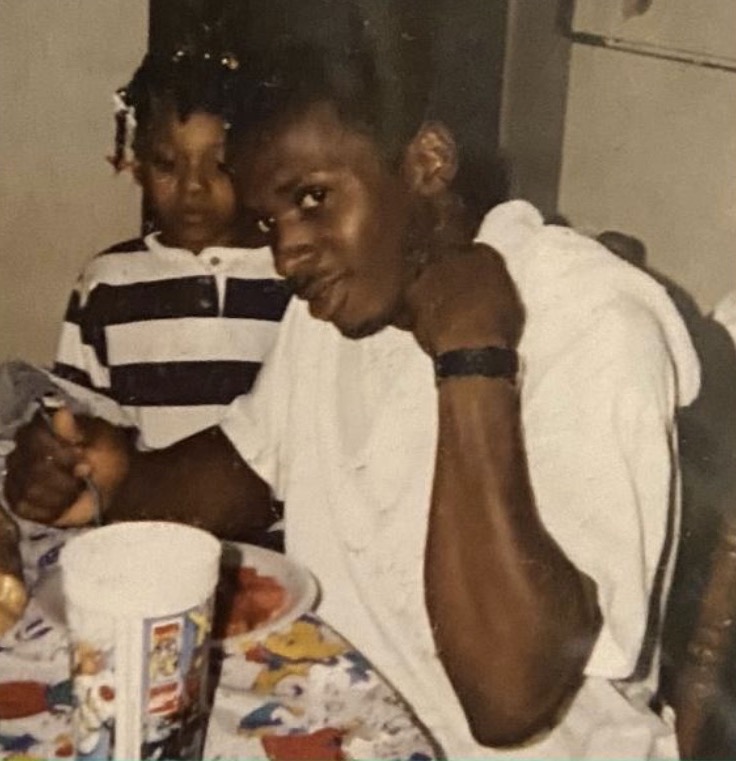
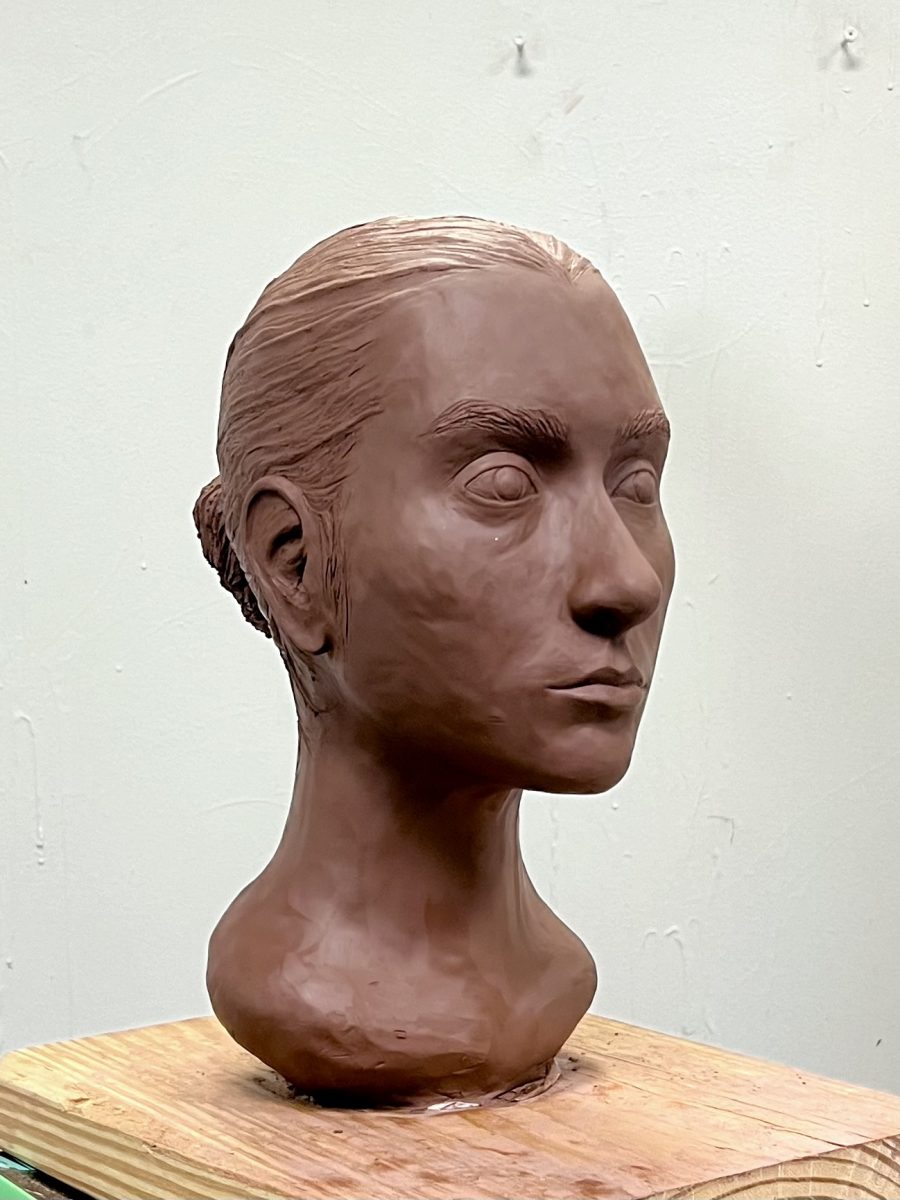
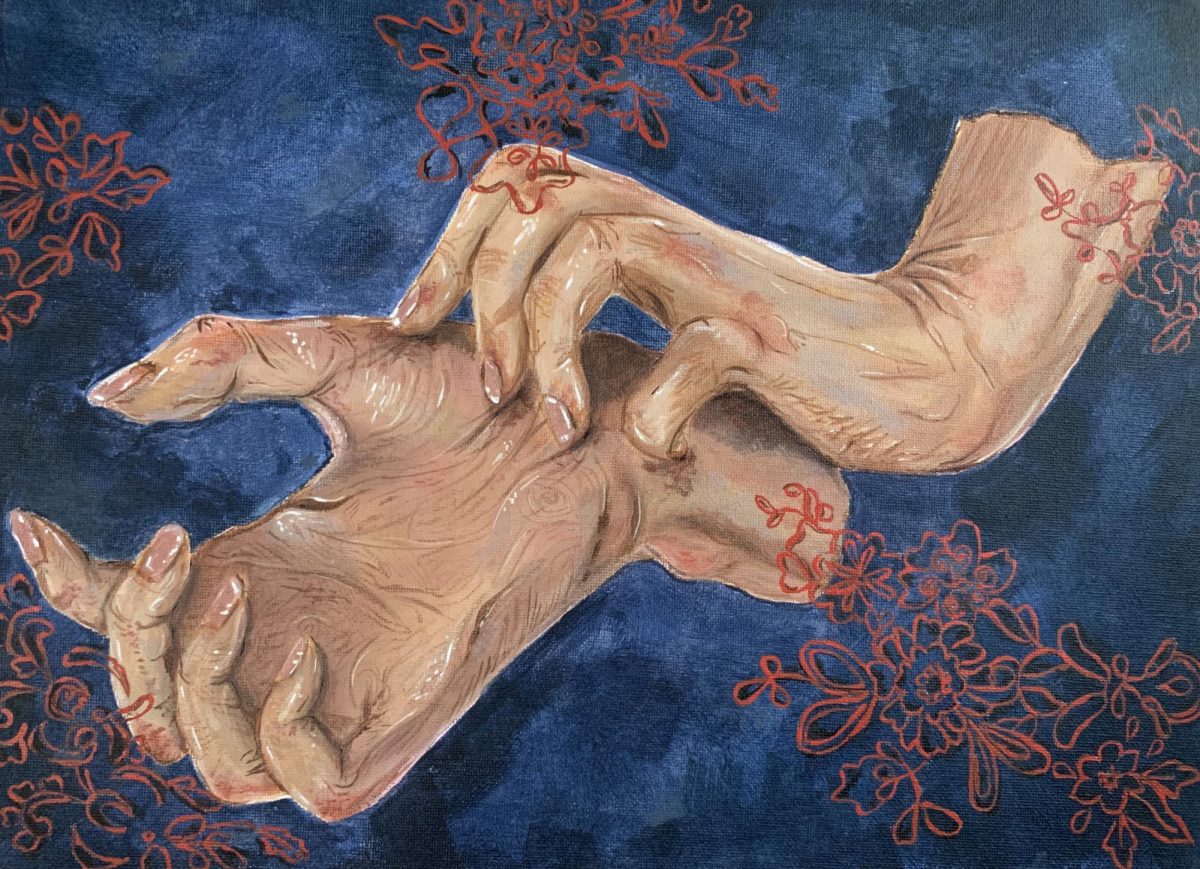
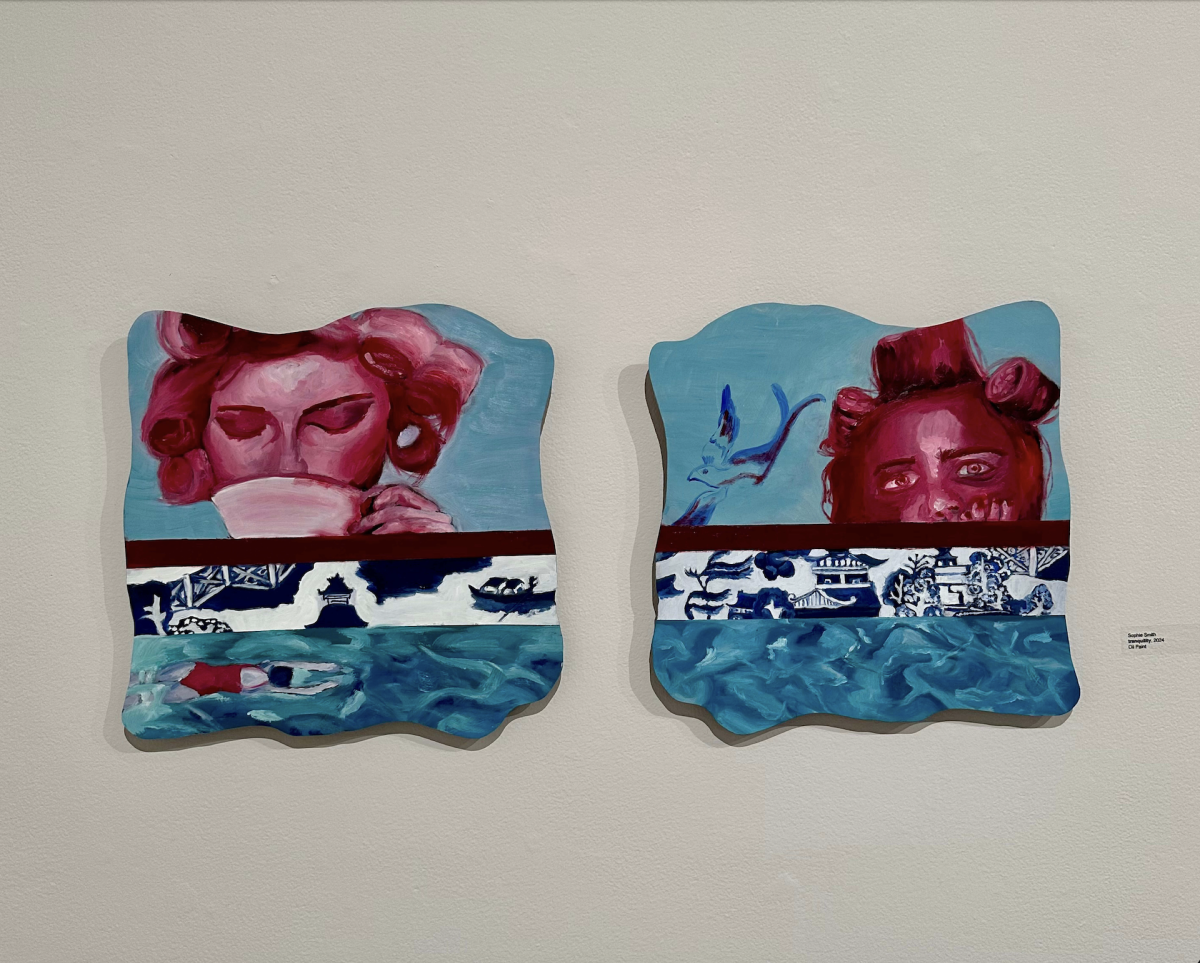
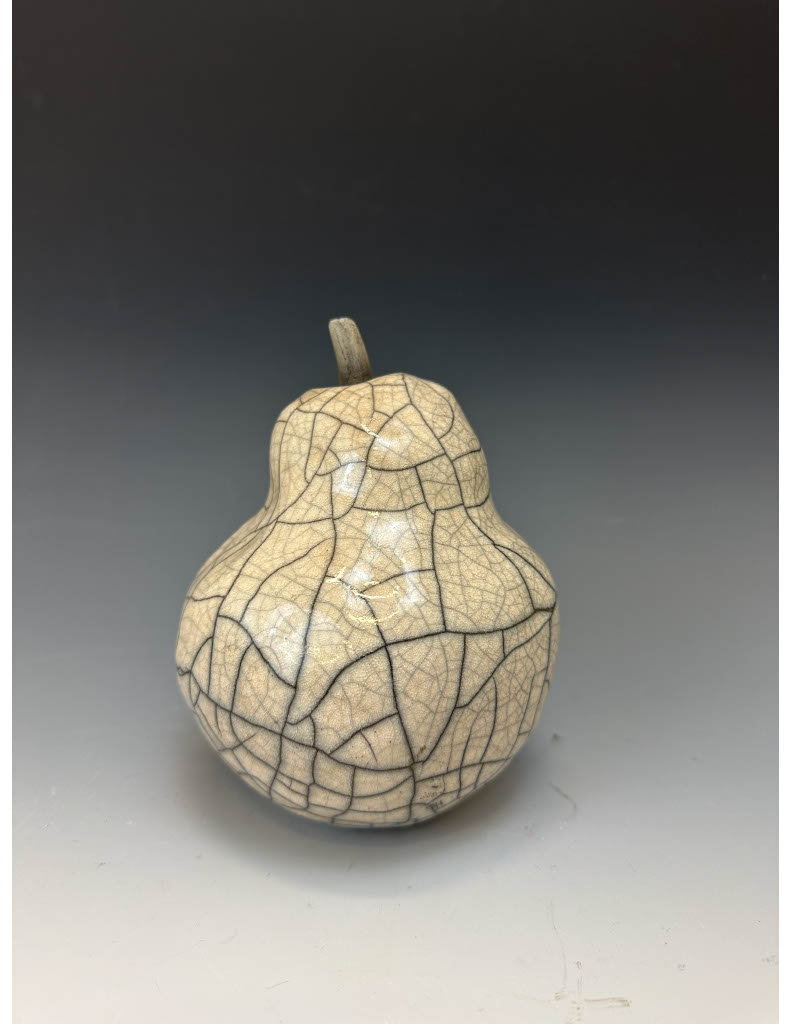
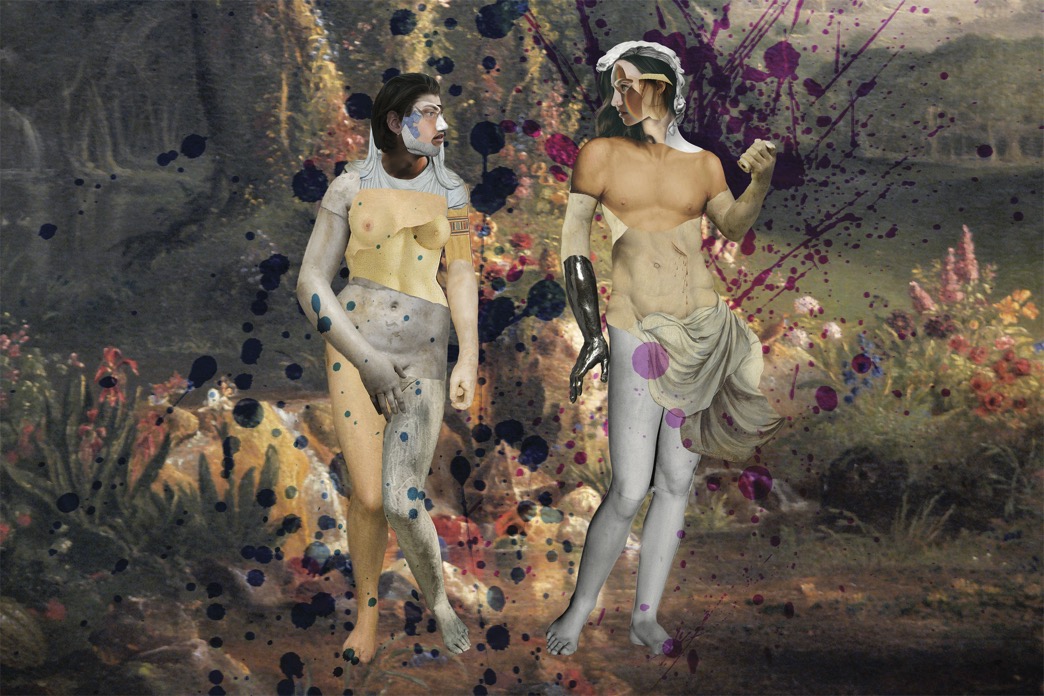




thevanderbiltreview • Oct 31, 2024 at 12:00 pm The Vanderbilt Review Pick
Notes from Emily, our prose editor: “I thought the piece did a unique but faithful twist to Shelley’s Frankenstein and had a lot of intrigue that made me want to keep reading. I wanted to know who was above the operating theater watching the whole time and what an “aberration” was. It really kept me on my toes, guessing the whole time and I appreciated that feeling in a piece where the theme was Shock and Awe. I really liked the jargon that was used as well like the “Cognitive Alignment Assessment” and its different stages. I thought the jargon was clearly defined well and didn’t make the story too overwhelming or over-descriptive.”
thevanderbiltreview • Oct 31, 2024 at 12:00 pm The Vanderbilt Review Pick
Notes from Ethan, the story’s author: “I’m a huge sci-fi nerd so there’s definitely some general inspiration from the Blade Runner movies, in particular with the human-bodies-glitching-like-computers thing, as well as the larger unsettling vision of a future human society where the ability to create life has completely devalued it. I played around with the idea of distancing themselves from everyday ethics through jargon, something modern doctors are trained to do to some extent already. In the story, until proven otherwise, it’s not a person, it’s an “aberration.” It’s not murder, it’s “pulling the plug.” More specifically, the story idea was born from the music video for No Bad Days by Bastille, my favorite band. In the video, he’s trying to reanimate his wife by uploading his memories to a body, but the system keeps failing. I found a more interesting idea to be what if it didn’t fail, not catastrophically anyways, but there were little inconsistencies between the person you’re trying to bring back and the person you’ve created. How much error is allowed before they’re really “them.” There’s definitely some Ship of Theseus and Mary Shelly in there too. If someone can’t remember the name of their sister, for example, you might be inclined to believe a reanimation procedure wasn’t done correctly. But what about their breakfast yesterday? Or their shirt color? What little detail do you pick to draw the line as to when they’re “real”? And if the technology is good enough to make a near-perfect recreation of a person (if such a thing exists – people are inherently not perfect, after all) then why not go for that last little detail. I’ve also always loved the term “operating theater” and how creepy it sounds when removed from its etymological roots. In the story I try to touch on that feeling while leaning into the wordplay of “theater” – the idea that what characters think of as real is really just a smokescreen, and how everyone is being watched. From there, the story sort of came together. I spent an entire Saturday just trying to think of something to write. My favorite part, I think, is that if you run with the idea that humanity develops a technology capable of storing a conscience virtually, it doesn’t feel that far from a scenario that might actually play out in the future, to me at least.”